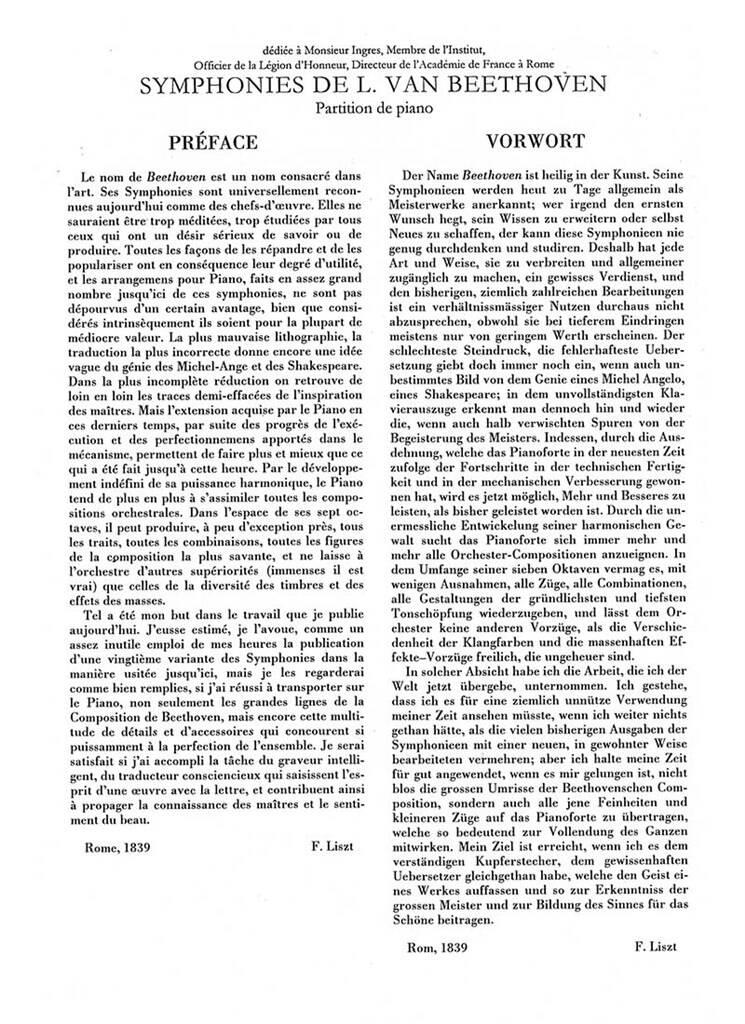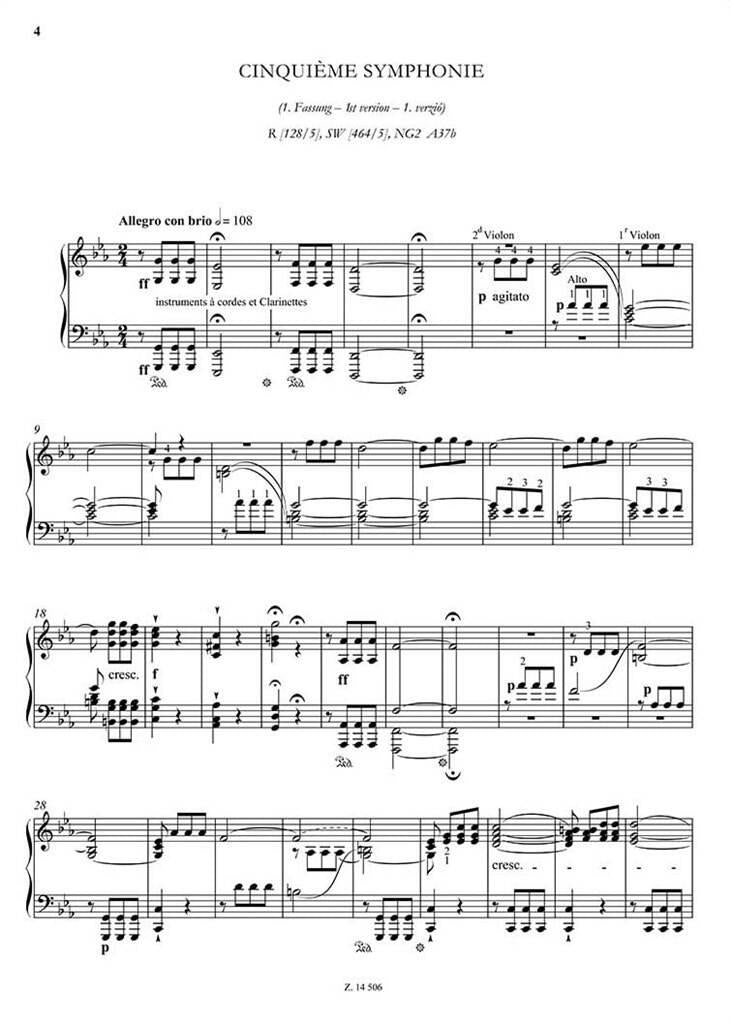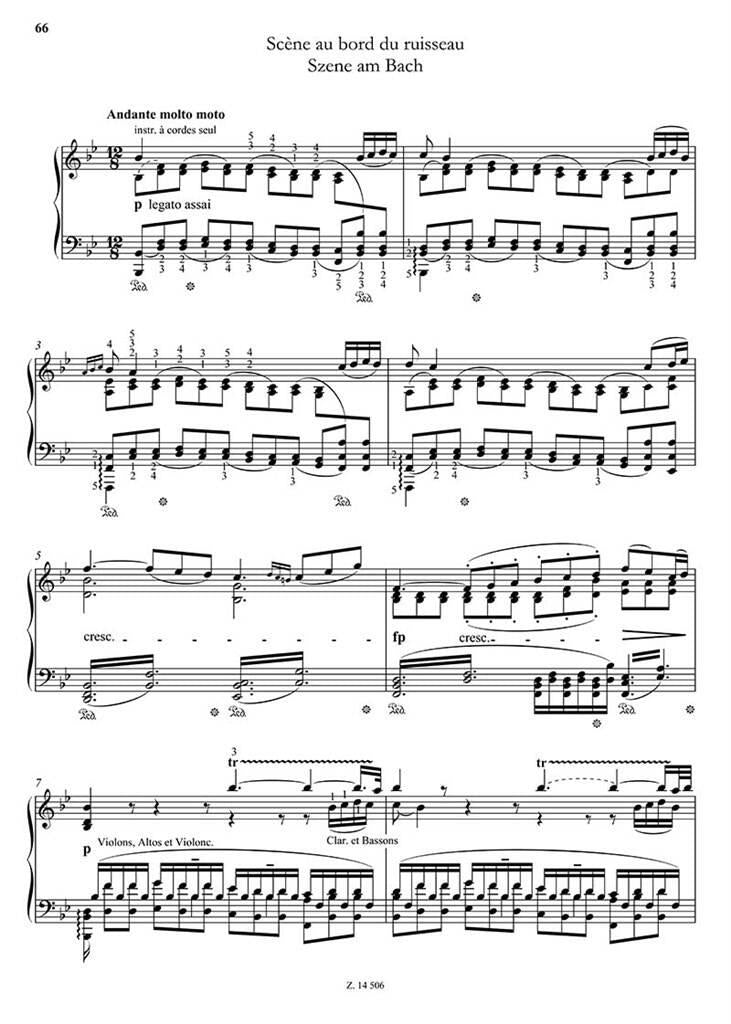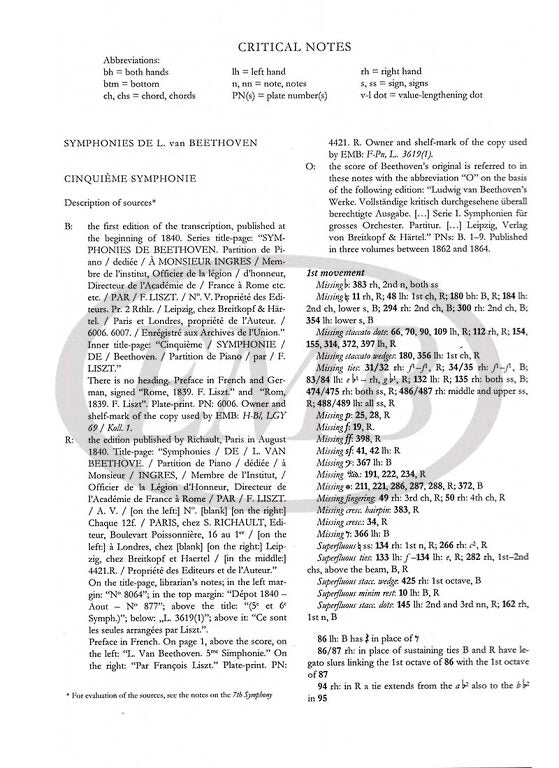Liszt: Transcriptions of Beethoven's Symphonies Nos. 5-7 & Marche funebre (Early Versions))
New Liszt Edition - Supplemental Volume 11
In stock and typically ships within 1 business day.
- Composer: Franz Liszt (1811-1886)
- Editor: Imre Mezö
- Instrumentation (this edition): Piano
- Originally for: Piano
- ISMN:
- Size: 9.1 x 11.8 inches
- Pages: 208
- Urtext / Critical Edition
Description
There were two periods in Liszt's life when he worked intensively at transcribing Beethoven's symphonies for the piano: between 1835 and 1843, and between 1863 and 1865. in the earlier period he produced the piano versions of symphonies nos. 5, 6, and 7, and the second movement of symphony No. 3 (Marche fun?bre). in the later period, Liszt wrote the piano transcriptions of the other symphonies, and also revised the earlier 'piano scores' as he himself termed the piano transcriptions, a much richer genre than a mere piano reduction.
Supplementary volume 11 of the New Liszt Edition contains Symphonies nos. 5-7, and an early version of the Marche fun?bre , and thus makes it possible for performers and musicologists to study Liszt's earlier and later piano versions of these Beethoven symphonies by placing them side by side.
The volume includes a detailed preface in German, English, and Hungarian, including new research findings and manuscript facsimiles, as well as critical notes in English. Along with the cloth-bound edition, a practical paperback version has also been published, the contents of which are identical, but for the omission of the critical notes.
Works:
- Symphonie No. 5 de Beethoven, S. 463a, LW A37b/1
- Symphonie No. 6 de Beethoven, S. 463b, LW A37b/2
- Symphonie No. 7 de Beethoven, S. 463d, LW A37b/3
- Marche funèbre de la Symphonie héroïque de Beethoven, S. 463e, LW A37a
Publishers use a lot of words to describe what they sell, and we know it can be confusing. We've tried to be as clear as possible to make sure you get exactly what you are looking for. Below are descriptions of the terms that we use to describe the various formats that music often comes in.
Choral Score
A score for vocalists that only contains the vocal lines. The instrumental parts are not there for reference. Generally, cheaper than a vocal score and requires multiple copies for purchase.
Facsimile
Reproductions of the original hand-written scores from the composer.
Full Score
For ensemble music, this indicates that the edition contains all parts on a single system (there are not separate parts for each player). In larger ensembles, this is for the conductor.
Hardcover
Hardbound. Generally either linen-covered or half-leather.
Orchestral Parts
Similar to a wind set, this is a collection of parts. In the case of strings, the numbers listed are the number of copies included, though generally these are available individually (often with minimum quantities required).
Paperback
When publishers offer multiple bindings (e.g. hardcover) or study scores, this is the "standard" version. If you're planning to play the music, this is probably what you want.
Performance / Playing Score
A score of the music containing all parts on one system, intended for players to share. There are not separate parts for each player.
Set of Parts
For ensemble music, this indicates that there are separate individual parts for each player.
Solo Part with Piano Reduction
For solo pieces with orchestra, this is a version that contains a piano reduction of the orchestra parts. For piano pieces, two copies are typically needed for performance.
Study Score
A small (think choral size) copy of the complete score meant for studying, and not playing. They make great add-ons when learning concertos and small chamber works.
Vocal Score
A score prepared for vocalists that includes the piano/organ part or a reduction of the instrumental parts.
Wind Set
For orchestral music, this is a collection of wind and percussion parts. The specific quantities of each instrument are notated.
With Audio
In addition to the printed music, the edition contains recordings of the pieces. This may be an included CD, or access to files on the internet.
With / Without Fingering (Markings)
Some publishers prepare two copies - a pure Urtext edition that includes no fingering (or bowing) suggestions and a lightly edited version that includes a minimal number of editorial markings.






